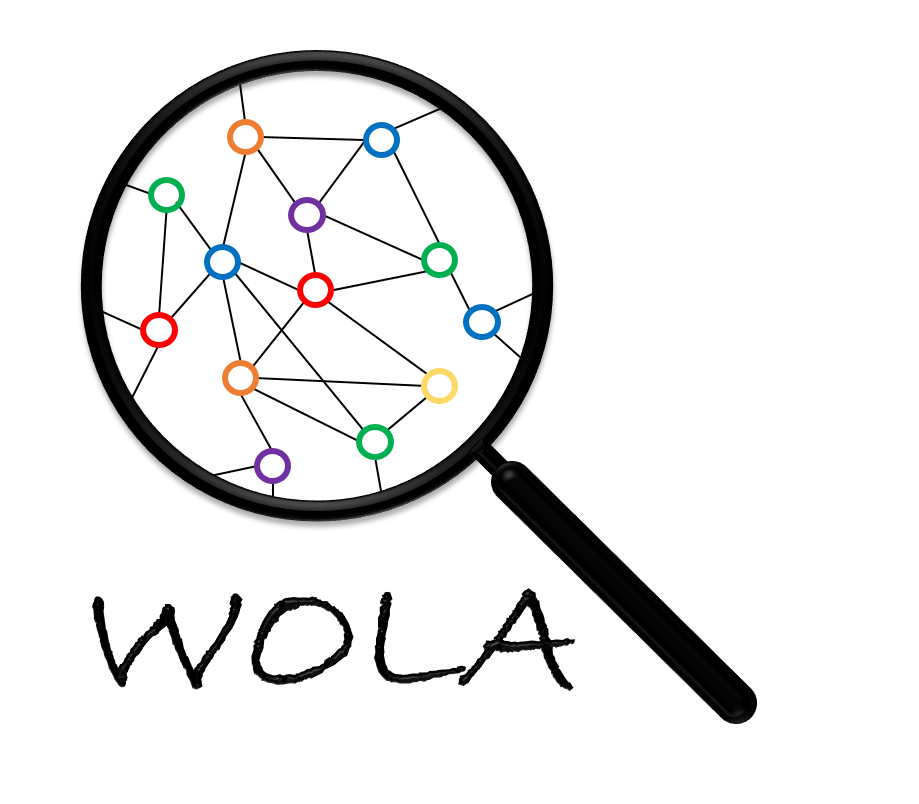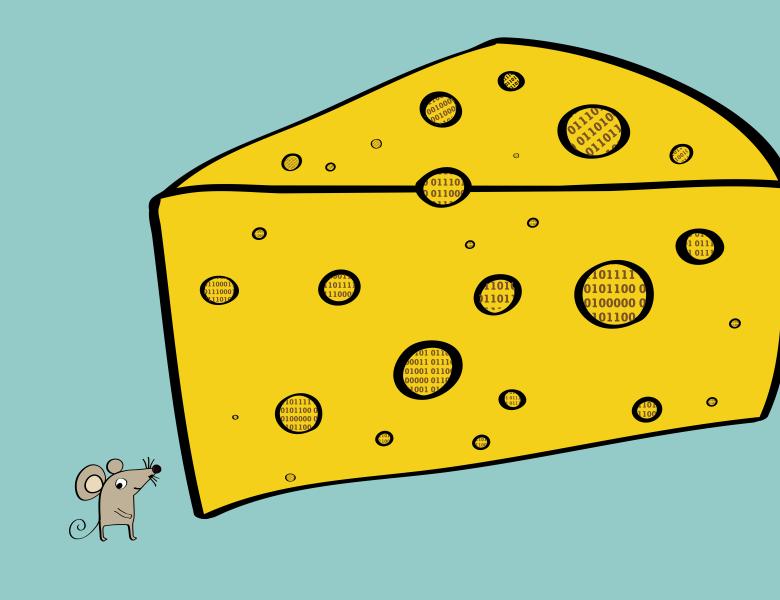The month of August was… wow, intense! We listed no fewer than 13 property testing papers, which is great. Keep them coming!
If you like high-dimensional expanders (HDX) and agreement testing, this is your lucky day! We start with two (2!) exciting papers on HDX, and agreement testing in the low soundness regime:
Characterizing Direct Product Testing via Coboundary Expansion, by Mitali Bafna and Dor Minzer (ECCC). This paper focuses on direct product testing: namely, given query access to a function \(F\) defined on a \(d\)-dimensional simplicial complex, we consider testers which samples two faces, and check if \(F\) is consistent on their intersection. Such testers will pass with probability one when \(F\) is a direct product, so the question is what “soundness” (probability of rejecting if \(F\) is far from being one) one can achieve. And, central to this paper: can we use high-dimensional expanders to get such testers?
While the high-soundness regime is reasonably well understood, the low-soundness one… not so much. This paper makes progress on that front: the main result states that, to allow for direct product testing in this low soundness regime, “a high-dimensional spectral expander must possess a property that may be seen as a generalization of coboundary expansion.”
Agreement theorems for high dimensional expanders in the small soundness regime: the role of covers, by Yotam Dikstein and Irit Dinur (ECCC). Concerned with the same type of question, this paper provides another characterization of the agreement test properties of high-dimensional expanders in the low-soundness regime: specifically, in terms of the topological covers of the expander.
Rejoice: we’re not done with HDX!
New Codes on High Dimensional Expanders, by Irit Dinur, Siqi Liu, and Rachel Zhang (ECCC). This paper constructs a new family of locally testable codes (LTCs), based on simplicial (bounded-degree) high dimensional expanders, which, while they do not achieve the \(c^3\) Holy Grail (constant rate, distance, and testability), do satisfy a host of potentially useful properties: symmetric, with low-density parity-check matrices (LDPC), and some additional structure (multiplying two codewords gives a related codeword).
Now, onto quantum…
Space-bounded quantum state testing via space-efficient quantum singular value transformation, by François Le Gall, Yupan Liu, and Qisheng Wang (ECCC). Suppose two “computationally limited” (read: space-bounded) quantum devices are used to prepare quantum states \(\rho_0\) and \(\rho_1\), and claim they are identical: your goal is to check whether these two states are close, or very far, for some reasonable distance measure. How hard could that be, computationally? This is exactly a variant of quantum state testing (i.e., the “quantum generalization of tolerant closeness testing” in distribution testing jargon) which places restrictions on the “source” of the observations: this paper establishes several characterisations of the computational complexity of the task, for various distance measures: trace distance, Hilbert-Schmidt distance, quantum entropy difference, and quantum Jensen-Shannon divergence.
Quantum Lower Bounds by Sample-to-Query Lifting, by Qisheng Wang and Zhicheng Zhang (arXiv). There exist several methods to prove quantum query complexity lower bounds, such as the polynomial and the adversary methods. This paper brings a new kid in town: a “sample-to-query lifting” result, which lets one convert a query-based algorithm for a promise problem to obtain a sample-based quantum algorithm for a corresponding testing problem, with a quadratic blowup from query to sample complexity. That is, any sample complexity lower bound for that problem now implies a (quadratically weaker) query complexity lower bound for the original task! Thus, the result allows to “systematically derive quantum query lower bounds using corresponding sample lower bounds from quantum information theory.” The authors use this sample-to-query lifting to establish both new and previously known quantum query complexity lower bounds.
A little magic means a lot, by Andi Gu, Lorenzo Leone, Soumik Ghosh, Jens Eisert, Susanne Yelin, and Yihui Quek (arXiv). Alright, I have to say, I am completely out of my depth with this one. But the title is great, the abstract sounds interesting, and the paper contains a lower bound on the number of copies any tester for “non-stabilizerness” requires (Theorem 6).
… then interactive proofs…
Distribution-Free Proofs of Proximity, by Hugo Aaronson, Tom Gur, Ninad Rajgopal, and Ron Rothblum (ECCC). In distribution-free property testing, to model “real practical settings” the underlying distance measure is not Hamming, but one induces by an unknown probability distribution, PAC-learning style. In interactive proofs of proximity (IPP), the property testing algorithm can interact by an all-powerful, but all-very-much-untrusted prover, IP-style. Well, you probably have guessed by now: this paper introduces a new type of property testing, combining the two! And shows that any problem in NC admits a distribution-free interactive proof of proximity with strongly sublinear communication (\(\tilde{O}(\sqrt{n})\)), which (under some reasonable assumption) is near-optimal.
… and then, distribution testing!
New Lower Bounds for Testing Monotonicity and Log Concavity of Distributions, Yuqian Cheng, Daniel Kane, and Zhicheng Zheng (arXiv). Monotonicity is a pretty clean and natural property of probability distributions over the line: the probability mass function must be non-increasing. This definition straightforwardly generalizes to either dimensions, and, let’s be honest: given how simple this property is, surely, by now we must have tight bounds on the sample complexity of testing monotonicity, right? Turns out, yes, but no. The known upper and lower bounds are tight… as long as the distance parameter \(\varepsilon\) is not too small. But if it is, then… the bounds are lose. And same thing for a related property, log-concavity! This state of affairs was really annoying to some, and I am on of these “some.” Fortunately, this paper makes significant progress towards scratching that itch, by proving new lower bounds for both monotonicity and log-concavity (via a new lower bound technique, relying on moment matching but preserving the type of constraints monotonicity and log-concavity impose on the individual probabilities). Almost there!
Tight Lower Bound on Equivalence Testing in Conditional Sampling Model, by Diptarka Chakraborty, Sourav Chakraborty, and Gunjan Kumar (arXiv). In the usual sampling model for distribution testing, the algorithm gets i.i.d. samples from the unknown distribution(s). This is very natural, but often leads to very high sample complexities… a recent line of work, starting with Chakraborty, Fischer, Goldhirsh, and Matsliah (2011) and Canonne, Ron, and Servedio (2012), introduced the “conditional sampling model”, a more powerful oracle setting where the algorithm gets to condition on subsets of the domain of its choosing. And, lo and behold, with great (additional) power comes greatly lower sample complexity! But again, some itch to scratch: for one of the “flagship” distribution testing questions, closeness testing, there remained a quadratic gap between upper (\(\tilde{O}(\log\log n)\), Falahatgar, Jafarpour, Orlitsky, Pichapati, and Suresh ’15) and lower (\(\Omega(\sqrt{\log\log n})\), Acharya, Canonne, Kamath’15). Not anymore! For this question (and some related ones), this paper essentially closes the gap, proving an \(\tilde{\Omega}(\log\log n)\) lower bound, bypassing the limitations of previous lower bound techniques!
Support Testing in the Huge Object Model, by Tomer Adar, Eldar Fischer, and Amit Levi (arXiv). Another paper, another distribution testing model! In the Huge Object Model recently introduced by Goldreich and Ron, one gets i.i.d. samples from an unknown probability distribution over \(n\)-bit strings, but does not to actually get the samples themselves, which are too big: instead, the algorithm then gets query access to the individual samples (each being an \(n\)-bit string). This is a rather appealing model, and the authors focuses on the task of testing the support size of the distribution. As their results show, this turns out to be quite interesting: namely, the paper shows a separation between adaptive and non-adaptive algorithms, as well as a separation between number of samples and number of queries (to these samples).
We also have some Boolean function testing on the menu:
Linear isomorphism testing of Boolean functions with small approximate spectral norm, by Arijit Ghosh, Chandrima Kayal, Manaswi Paraashar, and Manmatha Roy (arXiv). Given two Boolean functions \(f,g\colon\mathbb{F}_2^n\to{-1,1}\), a standard property testing question is to test whether \(f,g\) are isomorphic. Now, one can instead ask whether they are linearly isomorphic: i.e., whether there exists some invertible matrix \(A\) with entries in \(\mathbb{F}_2\) such that \(f\circ A = g\). This is this question that the authors study, through two different lenses: first, focusing on the communication complexity of the question when Alice has \(f\) and Bob has \(g\); and on the (usual) query complexity. In both cases, their results are expressed in terms of the (approximate) spectral norm of the functions.
Adversarial Low Degree Testing, by Dor Minzer and Kai Zhe Zheng (arXiv). Consider an adversarial setting of property testing where, every time the tester makes a query, an adversary gets to “erase” a small number values of the function, say \(t\), to try to fool the tester. This model was recently introduced by Kalemaj, Raskhodnikova, and Varma: in this paper, the authors continue this line of study, and show that one can test in an erasure-resilient fashion whether a function has low degree (at most \(d\)) with \(\tilde{O}(\log^{O(d)}(t)/\varepsilon)\) queries.
And, to conclude, graph testing:
Testing Graph Properties with the Container Method, by Eric Blais and Cameron Seth (arXiv). Consider the \(\rho\)-CLIQUE property: does a graph on \(n\) vertices contains a clique of size at least \(\rho n\), or is it \(\varepsilon\)-far from it? This property has been extensively studied in the dense graph testing model, but lower and upper bound still exhibited a factor-\(\rho\) gap, particularly striking in the “small clique” regime (when \(\rho \ll 1\)). This paper, using the graph container method, nearly closes that gap, up to polylogarithmic factors: showing an \(\tilde{O}(\rho/\varepsilon)\)-query upper bound. The authors also establish an improved upper bound for another flagship testing question, \(k\)-COLORABILITY.
Oh, my. We forgot a paper last month (appeared end of June), which means… fourteen. Fourteen! (And, of course, apologies for overlooking this paper!)
Refining the Adaptivity Notion in the Huge Object Model, by Tomer Adar and Eldar Fischer (arXiv). For the huge object model in property testing, see one of the papers above. In this one, the authors focus on the notion of adaptivity in this model, in a fine-grained fashion: i.e., which queries depends on what the tester previously saw, with interesting subtleties about what that means in the huge object model. Of course, the key question is whether adaptivity allows for more efficient property testing… As they show, the answer is yes: the authors establish a hierarchy of separations.



